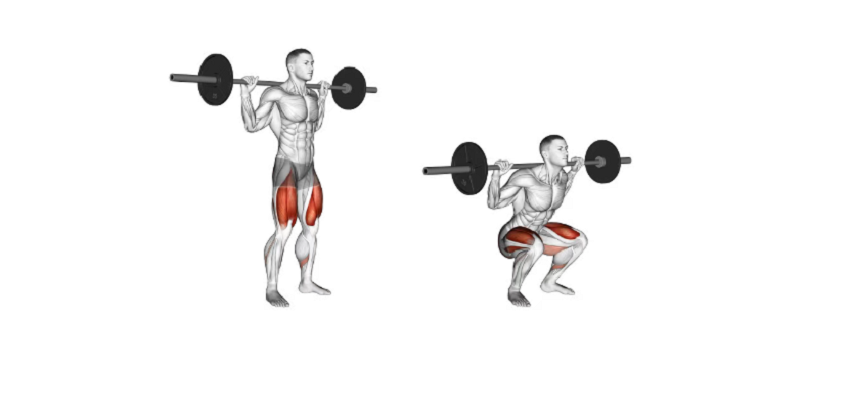Leg exercises without squats are for those who are afraid of squats or don’t want to do them. When it comes to leg training methods, the first choice in everyone’s mind is squats, but squats are not for everyone. Some people are reluctant to do barbell squats.
Common Reasons People Avoid Barbell Squats (And That’s Totally Okay)
I’ve noticed something from both my own training and talking to a lot of people online and offline: not everyone is comfortable doing barbell squats. And honestly, that’s completely understandable.
At first, let’s look at some of the common reasons why:
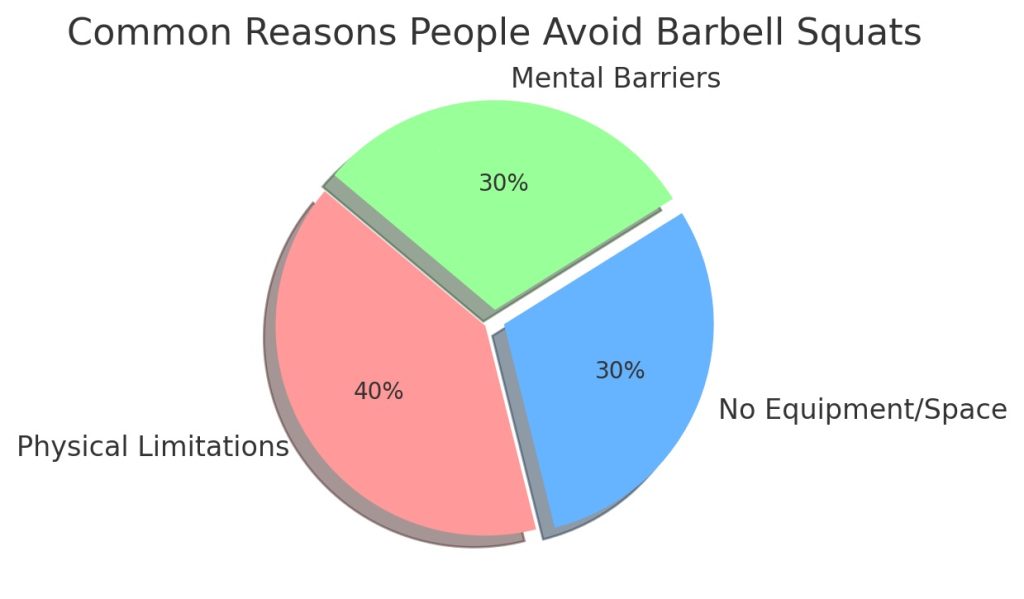
✅ Objective Reasons (Things You Can’t Really Control)
Some people deal with real physical limitations:
Injuries—like bad knees, lower back issues, or past joint problems
Chronic conditions—arthritis, reduced mobility, or general pain
Body mechanics—for some, squatting with the right form just doesn’t work
In these cases, forcing yourself to barbell squat can do more harm than good. I’ve seen it happen: people try to push through, and they end up making things worse. If your body is telling you no, listen to it.
🚫 Practical Barriers (No Equipment or Space)
I get it—not everyone has a home gym or access to a squat rack. Sometimes, the only “equipment” you have is your own body.
In this case, squats with a barbell just aren’t realistic. But here’s the good news: there are other ways to build strong legs without one.
😟 Subjective Reasons (Fear or Lack of Confidence)
Then there’s the mental side. If you are a beginner, you are worried that your squat form is not perfect and you may get hurt. Maybe you’ve seen others hurt themselves trying to squat too heavy, too soon.
I’ve been there too. When I first started, I was nervous every time I got under the bar. And without someone spotting or guiding you, it can feel risky.
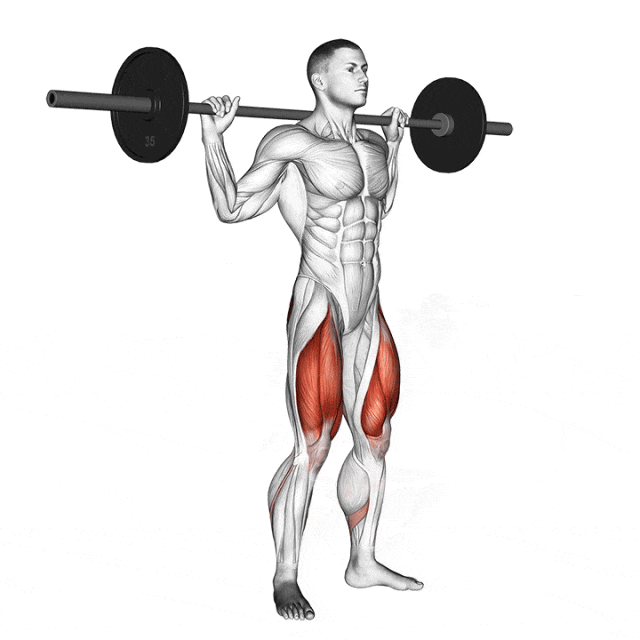
So, do I have to do barbell squats to build my leg strength? No, there are many leg exercises without squats. You can choose the appropriate exercise for leg exercises from the exercises below.
Effective Leg Exercises Without Squats
Here are some leg exercises without squats so you can choose the best one for your needs to list.
- Barbell Hip Thrust
- Romanian Deadlift
- Leg Press
- Leg Extension
- Machine Hack Squat
- Lunges (With Bodyweight or Dumbbells)
- Step Exercise (Borrowing a Box)
Detailed action description:
Barbell Hip Thrust
Barbell hip thrust is the first exercise I recommend to replace barbell squats, so you don’t have to worry about your barbell being idle. The barbell hip thrust reduces pressure on the spine while exercising the gluteal muscles. However, practitioners say that the hip thrust action can make the buttocks feel uncomfortable, so you need to be mentally prepared.
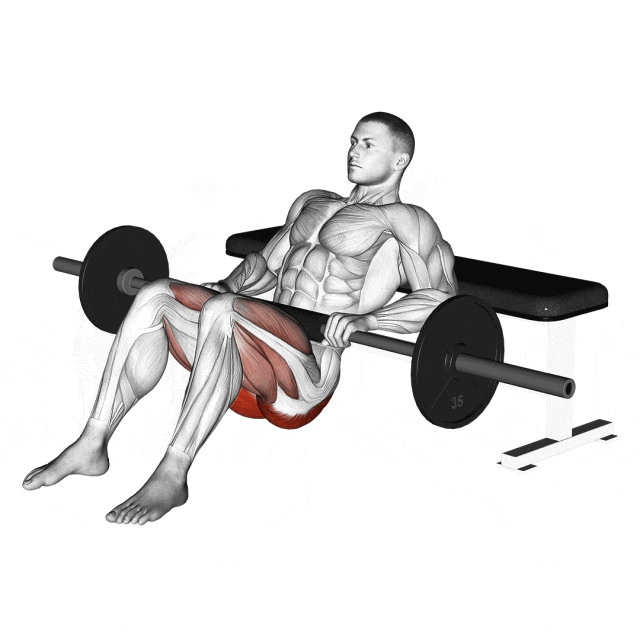
Movement Analysis:
- At first, bend your knees and support yourself on the ground, lean your shoulders (trapezius and posterior deltoids) on the chair, place the barbell on your hips, and hold the barbell with both hands.
- When you descend to the lowest point, do not let your hips touch the ground, and then use your hips to push your hips up to the initial position.
Training Plan:
- 3–4 sets × 8–12 reps
- Rest 60–90 seconds between sets
Equipment: barbell, padded hip press bench or bench + pad, barbell pad or towel for hip cushioning
Romanian Deadlift
The Romanian deadlift is also an effective alternative to the barbell squat to build posterior chain strength. However, the friend Romanian deadlift requires good hamstring flexibility and correct form to avoid injury.

Movement Analysis:
- Stand with your feet shoulder-width apart and the barbell in front of you.
- Grasp the barbell with both hands, either with an overhand or mixed grip.
- Keep your back straight and chest up – tighten your core muscles.
- Bend your knees slightly, but don’t squat.
- Pivot from your hips – push your hips back as you lower the barbell under your legs.
- Lower the barbell until you feel a good stretch in your hamstrings. Keep your back straight.
- Push your hips forward and return to the starting position. Tighten your glutes at the top of the movement.
- Repeat this movement as many times as you want with control.
Training Plan:
- 3 sets × 10–12 reps
- Focus on slow, controlled movement
- Rest 60–90 seconds between sets
Equipment: Barbell (or dumbbell), plates, optional weight belt
Leg Press
The leg press is a controlled and joint-friendly alternative to squats that allows you to lift heavy objects without stressing your spine. The downside to the leg press is that it lacks core engagement and functional movement patterns compared to free weights.
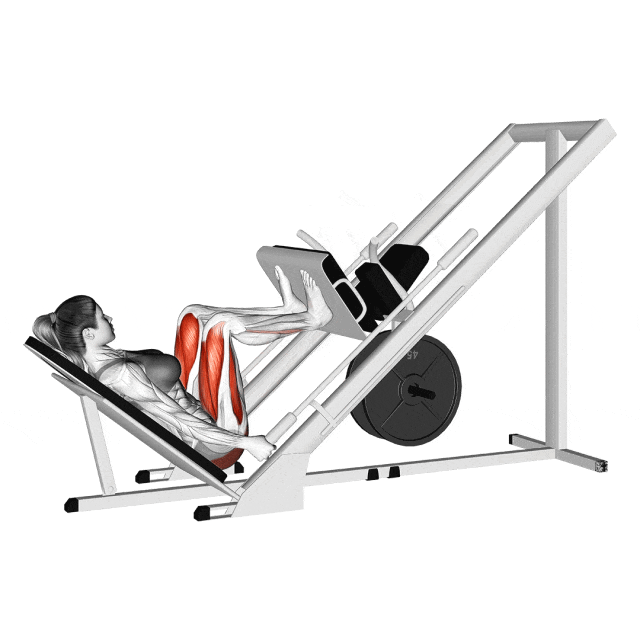
Movement Analysis:
- Sit on the leg press machine with your feet shoulder-width apart and placed on the platform.
- Adjust the seat so your knees are bent about 90 degrees.
- Grab the handles on both sides and keep your upper body stable.
- Push through your heels and extend your legs to push the platform up.
- Do not lock your knees at the top – keep a slight bend to protect your joints.
- Bend your knees and control the movement, and slowly lower the platform.
- Stop when your knees are just past 90 degrees, then push up again.
- Repeat for the desired number of times in a smooth, controlled motion.
Training Plan:
- 3–4 sets × 10–15 reps
- Increase weight progressively while keeping good form
- Rest 60–90 seconds between sets
Equipment: Leg press machine
Leg Extension
If your goal is to focus on the front thigh muscles, the leg extension is recommended; the caveat with this exercise is to be careful of knee strain when performing a large number of exercises.
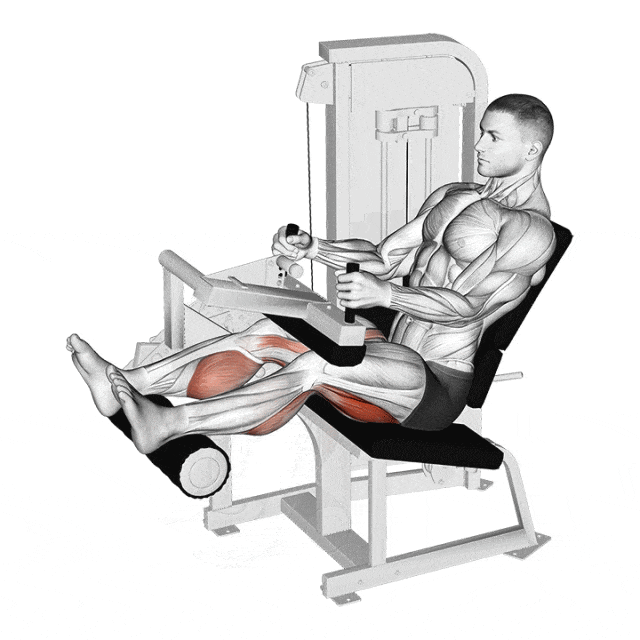
Movement Analysis:
- Perform the exercise on a seated or lying leg curl machine.
- Adjust the pads so that they are slightly touching the top of your heels.
- Bend only your knees without moving your upper body.
- Fully contract your hamstrings until the pads touch the underside of the seat frame (for seated leg curls) or touch your buttocks (for lying leg curls).
- Hold for two seconds, then slowly extend your legs.
Training Plan:
- 2–3 sets × 12–15 reps
- Use moderate weight to avoid joint strain
- Rest 45–60 seconds between sets
Equipment: Leg extension machine
Machine Hack Squat
The machine hack squat is a guided lower body exercise that helps build leg strength and stability, but it has the added constraints of space and equipment compared to the free weight squat.
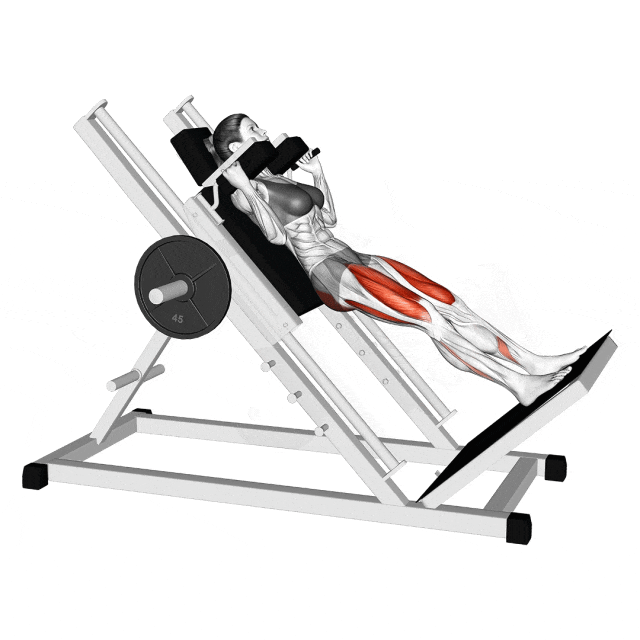
Movement Analysis:
- Stand in the hack squat machine with your shoulders on the mat and your feet slightly wider than hip-width apart in the center of the floor.
- Raise the sled, release the safety, and bend your hips and knees simultaneously.
- Lower your body, pause, and push the sled back down.
Training Plan:
- 3 sets × 8–12 reps
- Keep feet position consistent for balance
- Rest 60–90 seconds between sets
Equipment: Hack Squat Machine, Barbell Plates (optional for added resistance).
If you are a frequent gym-goer, you can choose the above 5 alternative movements according to your needs; if you want to practice at home or don’t have the above equipment, you can consider the following two fitness methods.
Lunges (With Bodyweight or Dumbbells)
Lunges require less space and equipment,are easier to train overall balance and coordination and can exercise multiple muscles in the lower body.
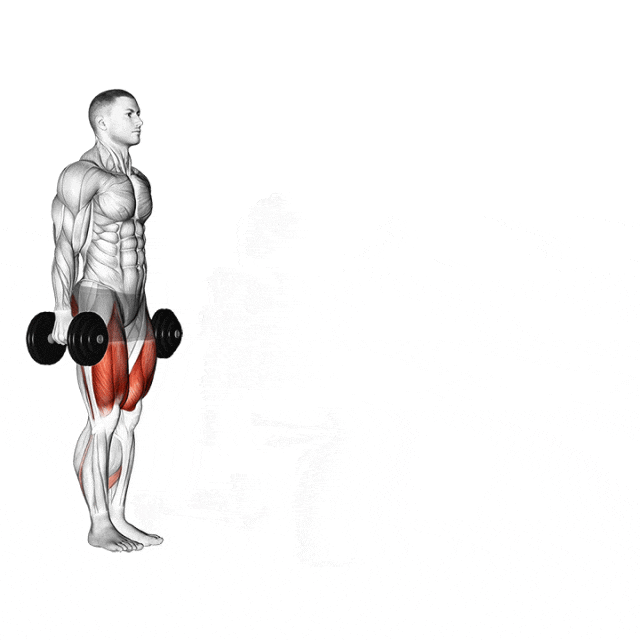
Movement Analysis:
- Stand with your feet hip-width apart and, if using dumbbells, place them at your sides.
- Step forward with one leg, lowering both knees to about 90 degrees, and then driving through your front heel to bring them back up.
- Alternate legs each time you do this exercise and maintain good form and control.
Training Plan:
- 2–3 sets × 10–20 reps on each leg
- Alternate legs or perform all reps on one side first
- Rest 45–60 seconds between sets
Equipment: Dumbbells (optional)
Step Exercise (Borrowing a Box)
Compared with barbell squats, step training is relatively safe. If you are a beginner and want to improve single-leg stability and coordination in addition to leg strength, it is recommended to choose this exercise. When you first start practicing, pay attention to choosing the right step height to avoid knee strain and losing the big picture for the small.
![step exercise [borrowing a box]](https://www.qdmodun.com/wp-content/uploads/2025/05/step-exercise-borrowing-a-box.gif)
Movement Analysis:
- Stand in front of a sturdy box or platform. If using dumbbells, place the dumbbells on both sides of your body. One foot is firmly placed on the box, chest up, and tighten the core muscles.
- Use the heel to lift the body onto the box.
- Lift the other foot and meet the front foot at the top.
- With both feet on the box, pause for a moment and stand up.
- Step down with the front foot.
- Control the step back and then put the other foot back on the ground.
- Repeat the movement, alternating legs, or complete all the movements on one side first.
Training Plan:
- 2–3 sets × 10–15 reps on each leg
- Use bodyweight or light dumbbells for added challenge
- Rest 45–60 seconds between sets
Equipment: Box or bench press, dumbbells (optional)
There is no one exercise you must do, only the one that works best for you. If you don’t want to do or can’t do the barbell squat, there are leg exercises without squats that will achieve the same results.
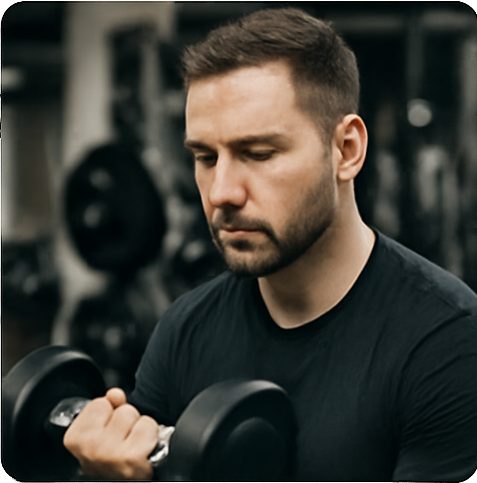
Hi, I’m the editor here at Leadman Fitness. We’re a manufacturer focused on producing top-quality barbells, plates, kettlebells, dumbbells, and strength training gear. I’ve been into sports and fitness for years, and I know my way around all kinds of gym equipment—both from using it and helping create it.
I spend a lot of time understanding the real problems people run into in the gym—whether it’s beginners trying to pick the right gear or experienced lifters looking for something more durable. I stay in close touch with our production team and talk directly with other equipment makers, so we’re always improving based on what real lifters and coaches are looking for.
What I share comes from hands-on experience—stuff that actually helps people train better, not just in theory, but in real gyms.
